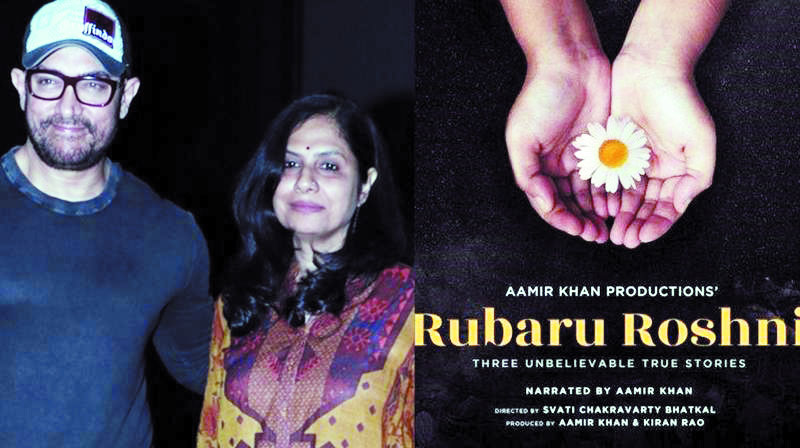Satyamev Jayate gave filmmaker Svati Chakravarty Bhatkal the confidence and the basic skills to make Rubaru Roshni, says Ayushi Sharma
Violence penetrates all areas of society, whether we know it or not. “There’s a cycle of brutality and counter-violence going on in the world, even little things spark off,” says the journalist-turned-film director Svati Chakravarty Bhatkal.
After a successful season of Satyamev Jayate, Svati made a documentary, Rubaru Roshni, produced by Aamir Khan, based on real-life incidents from the past decades.
Svati shared, “After Satyamev Jayate I was thinking about what I wanted to do next. I had turned 50, and had a deep desire to make a meaningful contribution to society. In 2015 I came across stories in newspaper and wanted to investigate further.”
She told, “There are three impactful stories of forgiveness. Three families, who lost their loved ones, and still took a step to forgive those responsible for it. The first part is The Orphan and the Convict, which talks about the broad daylight murder of politician Rajiv Maken. The second part is The Farmer and the Nun, a story of Sister Rani Maria, who was killed brutally in a bus in Madhya Pradesh. And third, The Terror and The Mom, the story of Kia Scherr, who lost her husband and daughter in the 26/11 terror attack.”
Svati explained how she thought of the title, she said there’s a couplet of Rumi’s — “The wound is where the light enters.” It completely summed up the essence of the film. She shared it with Aamir and told him that she wanted to keep it as a title. The actor instantly agreed and said we’ll call it Rubaru Roshini. “It was a perfect fit,” she said.
Svati said she didn’t need to convince the people to talk in front of the camera for the film as the process was “organic” and built on a relationship. She comforted them first by giving them proper time which in turn helped her gain their confidence.
“There wasn’t a need of convincing. Initially, I was just curious to know about their experiences. I had told them I want to shoot all that they say, but I don’t know how will it look like. A relationship began and things started to develop gradually. I wanted the characters to be real and tried keeping the stories in the way they are. It’s completely unscripted,” she said.
However, it was her initial show that helped her to learn the ropes of the craft. “The show Satyamev Jayate emphasised for me a better understanding of the audio-visual medium and equipped me with basic skills. I was a novice to the television world and couldn’t even operate a simple video camera. I received a better knowledge and training by working on the show for four years. It indeed made me confident when I planned Rubaru Roshni.”
The director did not chart out a course for herself. With some hard work and determination, things started to fall into place. “I’ve followed the pathways that life has tried to take me towards. I constantly keep making efforts until the output is worthwhile. I don’t think about what genre or medium it is that I am working in. I don’t know about the evolution bit, but I’ve had a lot of fun learning new things and new skills every couple of years. Not sticking to a specific medium has actually allowed me to enjoy the freedom of being fluid.”


























